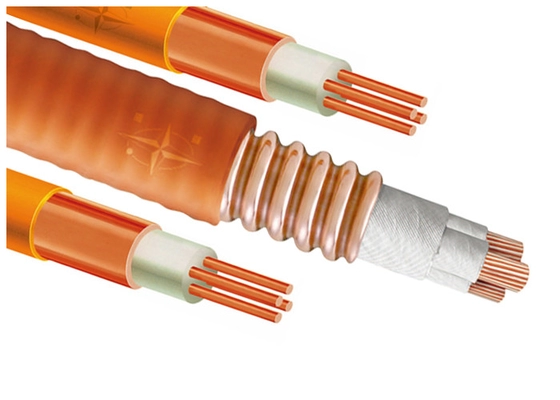Flame retardant cables and fire-resistant cables are integral components in fire safety and electrical systems. This comprehensive article offers an in-depth comparison of these two cable types, examining their characteristics, differences, applications, and compliance with safety standards and regulations.

Flame retardant cables are meticulously engineered to delay the spread of flames when exposed to fire. They are typically constructed using materials that inhibit the combustion process. Common materials include polyvinyl chloride (PVC) and low-smoke, zero-halogen (LSZH) compounds. Flame retardant cables find extensive use in residential and commercial buildings, where preventing the spread of fire is of paramount importance. They are commonly employed in building wiring, power distribution, and various electrical appliances.
Fire-resistant cables are designed to maintain functionality even in the presence of fire. They excel in high-temperature and flame-exposed environments. These cables are typically constructed with advanced materials such as mica tape and ceramic fibers, which provide exceptional insulation and fire resistance. Fire-resistant cables are essential in critical applications where uninterrupted communication and power supply during a fire are vital. These applications include fire alarm systems, emergency lighting, and evacuation equipment in buildings like hospitals, airports, and high-rise structures.
Understanding the key differences between flame retardant and fire-resistant cables is crucial:
Flame retardant cables use materials that slow down or halt the spread of fire. PVC and LSZH are commonly used materials. Fire-resistant cables, in contrast, incorporate advanced materials like mica tape and ceramic fibers to maintain functionality during a fire.
Flame retardant cables effectively delay the spread of flames, reducing the risk of fire propagation. Fire-resistant cables, on the other hand, are designed to withstand high temperatures and flames, allowing them to continue operating during a fire emergency.
Fire-resistant cables have superior insulation that prevents the cable from failing even when exposed to extreme heat. Flame retardant cables may have insulation that degrades under prolonged fire exposure, which can affect their long-term performance during a fire event.
Flame retardant cables are suitable for general electrical applications, offering basic fire protection in standard electrical systems. In contrast, fire-resistant cables are indispensable in critical systems like fire alarms, emergency lighting, and evacuation equipment, where continuous operation during a fire is non-negotiable.
Both cable types find unique applications across various industries:
Flame retardant cables are commonly employed in residential and commercial buildings where fire containment is essential. They serve in building wiring, power distribution, and various electrical appliances. These cables provide basic fire protection in standard electrical systems, reducing the risk of fire spread.
Fire-resistant cables are irreplaceable in critical applications where the continuous operation of electrical and communication systems during a fire is paramount. These cables are found in fire alarm systems, emergency lighting, and evacuation equipment in settings such as hospitals, airports, and high-rise structures. They ensure that essential systems remain functional, allowing for safe evacuation and communication during fire emergencies.
Both flame retardant and fire-resistant cables must adhere to stringent safety standards and regulations. Compliance ensures that these cables perform as expected in fire-related scenarios. Standards such as IEC, EN, and local building codes define the requirements for these cables, specifying parameters like flame spread, smoke emissions, and circuit integrity during a fire. Meeting these standards is critical to the safety of buildings and their occupants.
Guaranteeing the reliability and performance of flame retardant and fire-resistant cables involves rigorous testing and certification. These cables undergo fire tests, insulation resistance tests, and circuit integrity tests to assess their performance under fire conditions. Certification bodies, such as UL (Underwriters Laboratories) and LPCB (Loss Prevention Certification Board), provide approvals to cables that meet the required standards. Certification ensures that cables will perform as expected in critical fire scenarios.
In conclusion, the choice between flame retardant and fire-resistant cables hinges on specific requirements and safety considerations. Flame retardant cables offer basic fire protection in standard electrical systems, delaying the spread of flames. In contrast, fire-resistant cables are indispensable in critical applications where uninterrupted operation during a fire is non-negotiable. They withstand high temperatures and continue to function, ensuring that essential systems remain operational during fire emergencies. Understanding the differences and applications of these cables is crucial for ensuring fire safety and compliance with regulations in various settings.
Company:Jiukai Special Cable (Shanghai) Co., Ltd.
Contact:Ms. Ding
Tel:0086 021-57186991
Mobile:+86 13585832527
E-mail:daniel@jiukaicable.com
Address:No. 875, Puwei Highway Nanqiao Town, Fengxian District, Shanghai,China